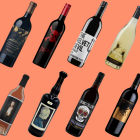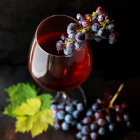For winemakers and seasoned wine aficionados, Burgundy’s Chardonnay is the pièce de résistance of French white wine. Sure, there are plenty of Chardonnay-producing regions around the world, but Burgundy is often considered the gold standard, thanks to a combination of climate, land and tradition that simply cannot be replicated anywhere else.
Burgundy produces a number of other white grapes – Aligote, Pinot Blanc, Pinot Gris and Sauvignon Blanc – but generally speaking, any reference to ‘White Burgundy’ means Chardonnay. Here’s what you need to know about the region’s illustrious grape.
A brief history of White Burgundy
Wine growing in Burgundy dates back to the second century AD. In the middle ages, wine production was largely supported by monks of the Roman Catholic Church, but it was in the 14th century, when the Dukes of burgundy banned the export of non-Burgundy wines to the European market, that the popularity of the region’s wines really soared.
As France’s roads and transportation systems improved, so grew the popularity of Burgundy wine, and come the 17th century it had become fashionable for bourgeoisie families to purchase famous vineyards. By the 1980s, vineyard production had increased drastically to account for a seemingly-insatiable appetite for Burgundy wine, but this came at the expense of quality, prompting many producers to overhaul their processes. This lead to richer whites with the creamier textures and enhanced flavours that they’ve become so famous for today.
Where is White Burgundy produced?
Broadly speaking, White Burgundy can be found in four areas within Burgundy, each with different terroirs and characteristics, hence the variation of flavour profiles – and cost – between them.
Bourgogne Blanc
Bourgogne Blanc is the basic white appellation of Burgundy, so grapes used for a single bottle can come from anywhere within the region. Generally speaking, though, they usually come from vineyards situated near to the producer. Because of this, Bourgogne Blancs are often the most affordable White Burgundies.
Typically, Bourgogne Blancs are easy-drinking with fresh apple and lemon notes, cheese rind or yoghurt aromas and a slightly nutty quality. They pair well with chicken and pasta, but their light-bodied nature means they are easily enjoyed on their own.
Maconnais
Situated at the southern end of Burgundy, next to Beaujolais, Maconnais is much warmer than the rest of the region and therefore creates ‘plumper’ whites than other areas. Flavours range from citrus to tropical fruit, and most are light and unoaked, although more expensive bottles may have a touch of new oak to add complex notes.
Generally speaking, Maconnais wines offer up more intensity that Bourgogne Blanc, but less power than those from Cote de Beaune. As such they pair well with most middle weight dishes.
Chablis
Chablis is located in the northernmost region of Burgundy, meaning it’s also the coldest. As such, its wines are tart and crisp – leaner still than the average Bourgogne Blanc. Chablis is famous for its intensely chalk white soils, as well as a number of Grand Cru vineyards, many of which oak their top wines to create a richer style akin to those found in Cote de Beaune. Chablis’ high acidity means it pairs well with almost everything.
Cote de Beaune
Cote de Beaune is arguably the Rolls Royce of Chardonnay production, home to some of the most expensive vineyard land on the planet. The most powerful of all French Chardonnay, wines here boast fleshy apple-based aromas as well as the earthy fresh aromas of mushroom and truffle. The use of new oak is common, too, resulting in well-integrated aromas of cinnamon and toasted bread.
Expect to pay top dollar for the finest examples, here. While village wines might start at around £25, Grand Cru wines can command hundreds – and often thousands – of pounds. Most will pair well with richer dishes, although the very best wines should be savoured on their own.
Burgundy classification
Burgundy has four levels of classification, or quality levels. As a general rule, as you move up in quality, you move up in price.
- Bourgogne Blanc: white wines blended with grapes from all over the region.
- Village: wines from a specific village, labelled with the village name.
- Premier Cru: wines made from a specific Premier Cru (1er) designated vineyard.
- Grand Cru: wines made from a specific Grand Cru designated vineyard.
White Burgundy vintages
Given the sheer variety of terroir found across the region it’s a challenge to pinpoint specific winning years for Burgundy, and more so for whites in particular. An idyllic spring in Maconnais might coincide with terrible weather in Chablis, for example. However, there are always standout vintages. Learn more about them in our guide to the best Burgundy vintage years.






